Inter-kingdom interactions and environmental influences on the oral microbiome in severe early childhood caries
- PMID: 40243315
- PMCID: PMC12131756
- DOI: 10.1128/spectrum.02518-24
Inter-kingdom interactions and environmental influences on the oral microbiome in severe early childhood caries
Abstract
Dental caries arise from intricate interactions among oral microorganisms, impacting ecological stability and disease progression. In this study, we aimed to investigate the microbial diversity and inter-kingdom interactions in severe early childhood caries (S-ECC) and assess the influence of environmental factors such as salivary pH and trace elements. We analyzed 61 children aged 3-4 years with complete deciduous dentition, evaluating salivary pH, buffering capacity, and trace elements (iron, fluoride). We examined the performance of 16S rRNA V1-V9 regions gene and internal transcribed spacer (ITS) primers for bacteria and fungi from plaque and saliva to characterize community compositions and diversity. Findings revealed significant shifts in bacterial diversity in S-ECC saliva samples, marked by decreased diversity and elevated abundance of cariogenic species, particularly Streptococcus mutans. Candida albicans was notably more prevalent in the S-ECC group, implicating its potential role in pathogenesis. Iron and fluoride concentrations showed no significant correlation with microbial community structure. Network analyses uncovered complex intra- and inter-kingdom interactions, underscoring cooperative and competitive dynamics. S-ECC children exhibited higher abundances of bacteria (Streptococcus mutans, Granulicatella, Actinomyces) and fungi (Candida albicans), with specific microbial taxa associated with reduced salivary pH.
Importance: This study illuminates the intricate relationship between bacteria and fungi within the oral microbial community of children, specifically highlighting differences between those with S-ECC and those without caries. Through an extensive analysis of the microbial composition in both saliva and dental plaque, we identified a significant increase in the abundance of specific bacterial taxa (e.g., S. mutans, Granulicatella, Actinomyces) and fungal species (e.g., C. albicans) in the oral cavities of children with S-ECC. This finding underscores the potential role of these microorganisms in the development of caries. Contrary to previous studies that emphasize the importance of iron and fluoride in oral health, our research found no significant correlation between the concentrations of these elements and the composition of oral microbial communities. This result challenges conventional understanding and opens new avenues for future research. Additionally, our findings revealed an association between Veillonella sp., Propionibacterium sp., and Candida sp. and reduced salivary pH. This provides novel insights into the relationship between the oral microenvironment and caries development. The implications of our findings are substantial for the development of prevention and intervention strategies targeting childhood caries. They also underscore the critical need for a deeper exploration of oral microbial interactions and their environmental influences.
Keywords: Candida species; bacteria; bacterial-fungal interactions; dental plaque; early childhood caries; fungi; microbial ecology; saliva.
Conflict of interest statement
The authors declare no conflict of interest.
Figures
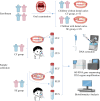
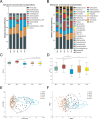
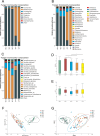

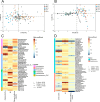
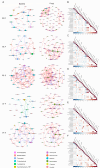
References
-
- Hoarau G, Mukherjee PK, Gower-Rousseau C, Hager C, Chandra J, Retuerto MA, Neut C, Vermeire S, Clemente J, Colombel JF, Fujioka H, Poulain D, Sendid B, Ghannoum MA. 2016. Bacteriome and mycobiome interactions underscore microbial dysbiosis in familial Crohn’s disease. MBio 7:e01250-16. doi:10.1128/mBio.01250-16 - DOI - PMC - PubMed
MeSH terms
Substances
Grants and funding
LinkOut - more resources
Full Text Sources
Medical

